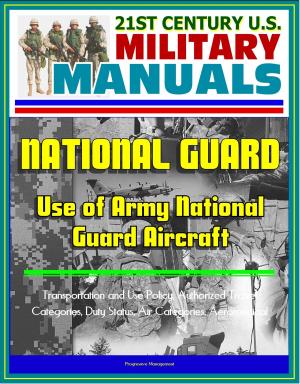Operation Sealords: A Study in the Effectiveness of the Allied Naval Campaign of Interdiction - Vietnam War Barrier to Support Riverine Operations, Zumwalt, Market Time, Game Warden, Viet Cong
Nonfiction, History, Military, Vietnam War, Asian, Naval| Author: | Progressive Management | ISBN: | 9781310833328 |
| Publisher: | Progressive Management | Publication: | April 14, 2016 |
| Imprint: | Smashwords Edition | Language: | English |
| Author: | Progressive Management |
| ISBN: | 9781310833328 |
| Publisher: | Progressive Management |
| Publication: | April 14, 2016 |
| Imprint: | Smashwords Edition |
| Language: | English |
This excellent report has been professionally converted for accurate flowing-text e-book format reproduction. The Vietnam War allied naval barrier operations to interdict the enemy infiltration of men and supplies coming across the Cambodian border into the Mekong Delta region was successful only through the utilization of joint combined naval, ground, and air assets.
Discussion: The United States Navy involvement in the Vietnam war prior to 1964 was primarily blue water operations. In 1964, the Vietnam Delta Infiltration Study Group was tasked to conduct a comprehensive study of the problem of enemy infiltration of men and supplies into South Vietnam Mekong Delta region across the Cambodia and Laos borders. The findings of the group were published in the Bucklew Report and concluded that the border infiltration problem was significant and needed to be stopped in order to ensure victory in the Vietnam War. The recommendations were for the U.S. to develop an extensive riverine operations capability to assist the South Vietnamese military in conducting counter-insurgency operations to stop the infiltration problem.
The U.S. Navy moved from deep blue water operations to near shore blue water operations with the Operation MARKET TIME patrols, which encompassed larger seagoing craft patrolling the coast to forty miles out to sea. These operations led to the first brown water operations during Operation GAME WARDEN which patrolled the major river systems in the Mekong Delta region in order to interdict enemy movements along the rivers. Soon these patrols revealed the need to ground troops to control the riverbanks in order for the patrols to be effective.
The Tet offensive of 1968 revealed that the MARKET TIME and GAME WARDEN patrols were not totally containing the infiltration problem. Operation SEALORDS established patrol barriers that were designed specifically to stop the influx of men and supplies crossing the Cambodian border and sustaining enemy forces operating in the Mekong Delta and Saigon areas. SEALORDS barriers were systematically set up to take control of the Mekong Delta region and deny the enemy the freedom of movement enjoyed for years prior.
Conclusion: Operation SEALORDS was extremely effective under U.S. control. The enemy could no longer mount large-scale offensives from within the Mekong Delta region as in the 1968 Tet offensive. The tactics, techniques, and procedures developed during the operation were key to the overall success of the counter-insurgency effort. The overarching key to the success of the operation was the joint combined efforts of the naval, ground, and air forces. Barrier interdiction operations cannot be effectively accomplished without joint efforts. Inter-service rivalry initially hampered operational efforts; however, the inter-service efforts eventually led to the operation's success.
This excellent report has been professionally converted for accurate flowing-text e-book format reproduction. The Vietnam War allied naval barrier operations to interdict the enemy infiltration of men and supplies coming across the Cambodian border into the Mekong Delta region was successful only through the utilization of joint combined naval, ground, and air assets.
Discussion: The United States Navy involvement in the Vietnam war prior to 1964 was primarily blue water operations. In 1964, the Vietnam Delta Infiltration Study Group was tasked to conduct a comprehensive study of the problem of enemy infiltration of men and supplies into South Vietnam Mekong Delta region across the Cambodia and Laos borders. The findings of the group were published in the Bucklew Report and concluded that the border infiltration problem was significant and needed to be stopped in order to ensure victory in the Vietnam War. The recommendations were for the U.S. to develop an extensive riverine operations capability to assist the South Vietnamese military in conducting counter-insurgency operations to stop the infiltration problem.
The U.S. Navy moved from deep blue water operations to near shore blue water operations with the Operation MARKET TIME patrols, which encompassed larger seagoing craft patrolling the coast to forty miles out to sea. These operations led to the first brown water operations during Operation GAME WARDEN which patrolled the major river systems in the Mekong Delta region in order to interdict enemy movements along the rivers. Soon these patrols revealed the need to ground troops to control the riverbanks in order for the patrols to be effective.
The Tet offensive of 1968 revealed that the MARKET TIME and GAME WARDEN patrols were not totally containing the infiltration problem. Operation SEALORDS established patrol barriers that were designed specifically to stop the influx of men and supplies crossing the Cambodian border and sustaining enemy forces operating in the Mekong Delta and Saigon areas. SEALORDS barriers were systematically set up to take control of the Mekong Delta region and deny the enemy the freedom of movement enjoyed for years prior.
Conclusion: Operation SEALORDS was extremely effective under U.S. control. The enemy could no longer mount large-scale offensives from within the Mekong Delta region as in the 1968 Tet offensive. The tactics, techniques, and procedures developed during the operation were key to the overall success of the counter-insurgency effort. The overarching key to the success of the operation was the joint combined efforts of the naval, ground, and air forces. Barrier interdiction operations cannot be effectively accomplished without joint efforts. Inter-service rivalry initially hampered operational efforts; however, the inter-service efforts eventually led to the operation's success.















